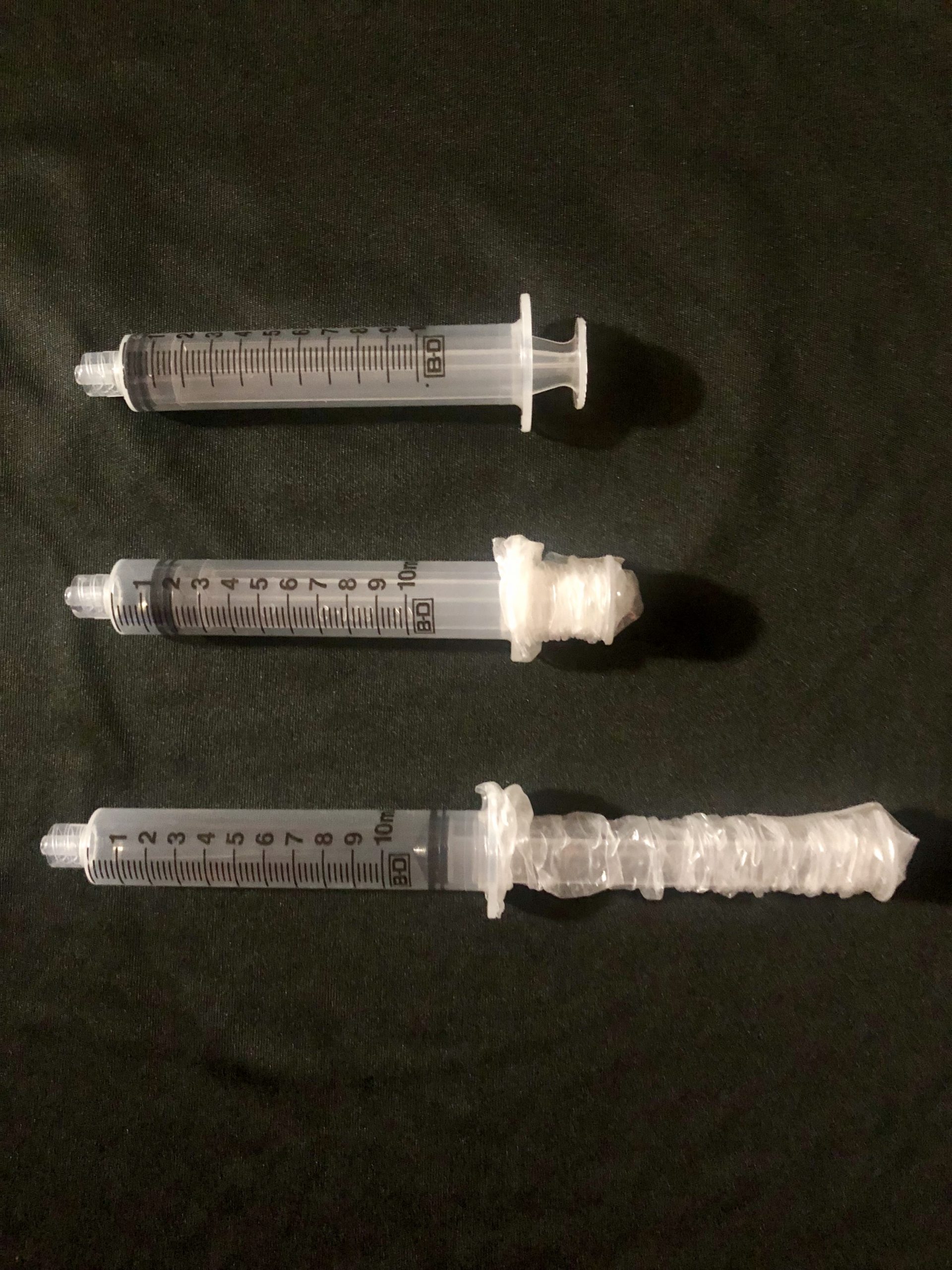Background: Nosocomial infections contribute significantly to morbidity and increase health care costs for both pediatric and adult patients in the United States.(1) Intravenous access remains a main source of nosocomial infections from environmental and (non-intentional) aseptic technique violations by healthcare providers via contact with stopcocks, IV tubing, and syringes.(2,3) Stopcock contamination and repeated syringe strokes have been associated with increased risk of nosocomial infection, which is of particular concern in immunocompromised hosts.(2,4-7) Syringe reuse frequently occurs by anesthesia and critical care providers with “push-pull” technique. We hypothesize that standard syringes can introduce risk for bacterial contamination with this technique and the use of modified sheathed syringes can decrease this contamination risk.
Methods: 20 modified sheathed syringes (Figure 1) were sterilized and 20 standard 10 mL syringe packs were opened under a filtered-air hood with sterile gloves. Sterile gloves were “contaminated” by introducing Staphylococcus aureus (S. aureus) via a dropper and used to handle the syringes using an otherwise aseptic technique. Each syringe was filled and emptied five times from a test tube containing a solution of sterile 1% peptone culture medium, incubated for 8 hours, and then plated. The Fisher Exact test was used to analyze results.
Results: Six out of 20 culture mediums from the standard syringes were positive for S. aureus while none of the culture mediums from sheathed syringes were positive, p = 0.02 (p<0.05).
Conclusions: Our results support the hypothesis that standard syringes can be a source of bacterial contamination and the use of sheathed syringes can reduce this contamination. Closed syringe sheaths provide improved aseptic technique adherence and minimize contamination, particularly during clinical scenarios requiring syringe reuse.(6,8) This is directly applicable to the use of syringes by anesthesia providers during the intraoperative period as well as pediatric critical care providers using a “push-pull” technique. The use of sheathed syringes should be considered in a setting where the provider might use a syringe multiple times, improving aseptic technique adherence while minimizing resource use and infection risk.

